
Scriptly Helps Pharmacies Identify Trends in Real Time with Reveal
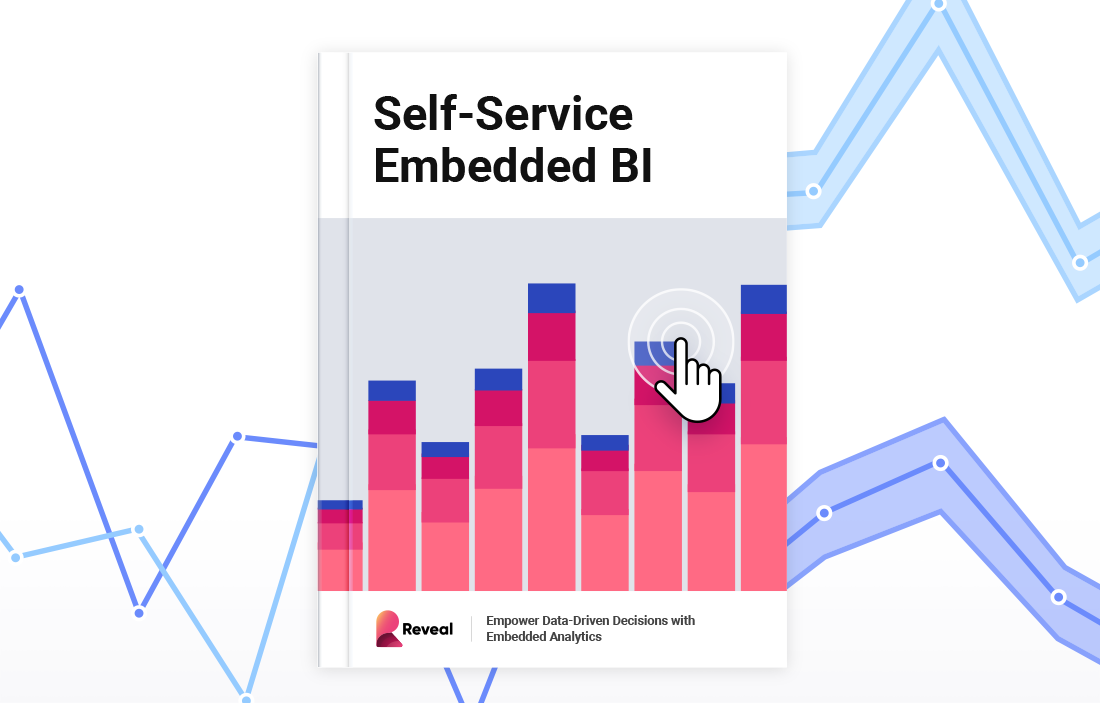
In this era of informational abundance, organizations need faster access to accurate data to make informed business decisions. Traditional BI systems, often complex and reliant on IT, struggle to meet this demand. On the other hand, self-service embedded business intelligence (BI) tools are being designed to provide user-friendly interfaces and intuitive visualizations, allowing users to explore data independently within their natural workflow, accelerating time to insights and decision-making.
This whitepaper provides a comprehensive overview of self-service embedded BI and its transformative impact on business intelligence. We'll explore the challenges and functionalities of self-service embedded BI platforms, explore the benefits for organizations, and guide you through considerations for successful implementation.
Fill out the form to continue reading.
For a long time, traditional BI platforms have served as powerful tools for data analysis, often managed by IT teams or BI professionals. Historically, dashboards and reports were generated only after a request by a business user, which not only led to long wait times but also restricted access for those without technical expertise. This approach often left non-technical business users dependent on others to extract insights, hindering their ability to make timely, data-driven decisions.

As the demand for quicker and easier access to insights grew, the need for more user-centric BI solutions became apparent. Self-service BI emerged as a data analysis approach empowering business users to independently access, explore, and analyze data, eliminating the reliance on IT teams or BI specialists.

Today, while many BI solutions offer self-service capabilities, they often remain standalone systems that require separate operational efforts and specialized technical expertise for effective management and utilization. In contrast, self-service embedded BI solutions seamlessly integrate within existing applications, enabling users of all technical levels to create custom dashboards, slice and dice data, and uncover hidden patterns—all within the context of their daily workflow.
Self-service embedded BI solutions like Reveal go beyond basic functionality. They come packed with advanced analytics features and user-friendly interfaces that empower business users to not only generate reports but also apply predictive analytics models to forecast outcomes, combine data from multiple data sources for a more comprehensive analysis, drill down into data, and much more.
This empowerment enables business users to gain actionable insights that inform strategic, data-driven decisions, effectively transforming the way organizations leverage data to meet their business objectives.
Choosing between traditional BI tools and self-service embedded BI solutions largely depends on your organization’s specific goals and operational needs. While traditional BI systems remain valuable for complex data analyses and controlled data environments, they can involve cumbersome processes that potentially slow down decision-making and typically require considerable IT oversight. For organizations aiming for agility, broader access to analytics, and quicker decision-making, self-service embedded BI offers a compelling alternative.
Self-service embedded BI solutions specifically address these limitations by equipping end-users with powerful tools directly within their operational environments. These innovative solutions empower a wider range of users to perform data analysis without the need for extensive technical expertise or constant IT support.
Here are the key differences between traditional BI and self-service embedded BI:
| Key point | Self-Service Embedded BI | Traditional BI Tool |
|---|---|---|
| Integration | Seamless with business applications, minimizing workflow disruptions. | Stand-alone, often causing workflow interruptions. |
| User Accessibility | Intuitive and user-friendly design. Accessible to both technical and non-technical users. | Typically requires specialized training for non-technical users. |
| Integration with Business Processes | Seamlessly integrates with existing business applications, reducing workflow disruption. | Often operates as a separate system, requiring users to switch between applications. |
| Customization and Flexibility | Highly customizable to match the host application branding and user experience. | Customization may be limited, and changes can be time-consuming. |
| Data Sharing and Collaboration | Encourages real-time collaboration within the context of the host application. | Collaboration may require switching to another system or exporting reports outside the BI system to share. |
| Cost and Resource Allocation | Transparent pricing models with predictable costs, often eliminating the need for significant infrastructure investments. | Costs may include per person software licenses, data storage and IT resources for maintenance. |
| Scalability | Offers scalability without significant investments, allowing for quick adaptation to changing demands. | Scalability may require additional hardware or resources leading to complexity and increased costs. |
| Access Control | Provides role-based access control to safeguard data and maintain compliance. | Role-based access control is a standard feature for ensuring data security. |
So far, it has become clear that the self-service approach provides many benefits to organizations. The fast, independent access to data and empowerment of non-technical users are at the top of the list, but there’s more to self-service BI. Here’s a summary of the main benefits of self-service BI for organizations:
Furthermore, self-service embedded BI tools can significantly increase ROI by reducing IT workload, providing easy access to accurate business information quickly, and encouraging a data-driven culture within the organization.
Next, let’s go over the core features and functionalities of self-service embedded BI solutions for accessibility, data exploration, integration, and customization that power the benefits we just covered. Understanding these capabilities will help you evaluate self-service embedded BI solutions and choose the one that best aligns with your business needs.
BI Self-Service Features
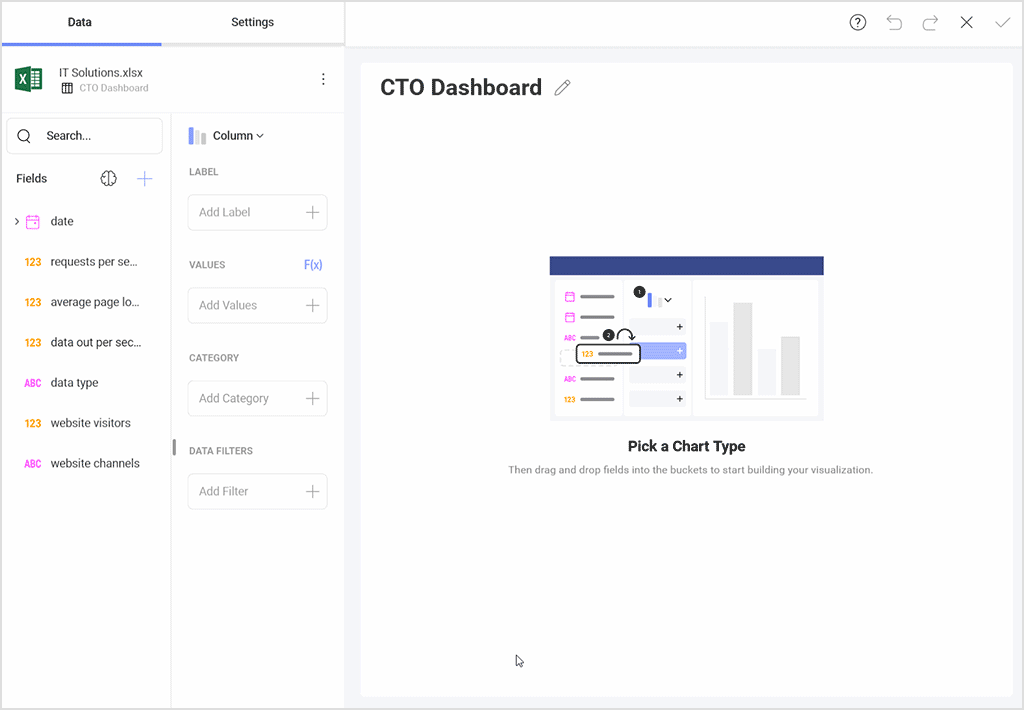
BI Features for Integration, Data Exploration & Customization
The above features and functionalities must be at the heart of any self-service embedded BI solution. Still, for it to be effective and a good investment, there are other things you need to consider, too, including:
Implementing a self-service embedded BI solution involves several critical considerations to ensure successful deployment and long-term effectiveness. Here’s a glimpse into these critical considerations and best practices for implementing self-service embedded BI into your platforms:
Key Considerations:

Best Practices:
Choosing the right self-service embedded BI solution is essential for empowering everyone within your organization with effective data analysis tools and insights. In this chapter, we compare the top self-service embedded BI solutions on the market to further help you narrow your search and find the right solution for your organization sooner.
Reveal is built from the ground up for embedded analytics and provides a fully customizable self-service BI solution. Unlike most embedded analytics solutions that rely on simple iFrames within a Web View, Reveal provides a true embedded analytics SDK, giving you complete control over the app experience, including feature visibility, branding, security, and deployment. With its powerful API and native SDK support, Reveal ensures seamless integration, making data exploration effortless with an intuitive drag-and-drop interface, customizable themes, and simplified dashboard editing.
Partnering with Reveal guarantees fast and seamless integration into any platform or tech stack and a straightforward pricing model that enables you to reach unlimited users per application, making it a cost-effective and powerful solution for modern businesses.
Tableau is a widely recognized BI solution known for its powerful data visualization capabilities and robust analytics features. As a self-service embedded BI tool, Tableau enables users to create interactive dashboards and detailed reports without extensive technical expertise. It integrates well with a variety of data sources and offers a highly customizable experience.
However, Tableau can be resource-intensive and may require significant IT involvement for initial setup and ongoing management. Additionally, the cost can be a consideration, especially for smaller organizations.
Domo is an all-in-one BI platform that combines data integration, visualization, and analytics into a single solution. It offers user-friendly dashboards and real-time data insights, empowering business users to explore data and make data-driven decisions. Domo’s extensive data connectivity and cloud-based architecture support seamless integration and scalability.
While Domo is strong in providing comprehensive BI capabilities, it can be complex to implement and manage. The platform’s pricing model is another factor to consider, as it can become expensive as your data and user base grow.
Sisense is an embedded BI solution that emphasizes ease of use and powerful analytics capabilities. It offers a full-stack analytics platform that combines data preparation, analysis, and visualization. Sisense’s unique In-Chip technology ensures fast data processing and real-time analytics, making it suitable for large datasets.
Sisense is highly customizable and supports a wide range of data sources, but it may require significant IT involvement for initial deployment and ongoing maintenance. Additionally, while Sisense offers a robust feature set, its complexity can pose challenges for non-technical users.
Operating as a hosted SaaS solution using an iFrame approach, Qrvey is a versatile self-service embedded analytics solution that empowers users to analyze data and derive actionable insights. It offers intuitive data visualizations, advanced analytics capabilities, data filtering options, support for big data processing, machine learning, and self-service functionalities for users of all skill levels.
Qrvey is tailored to organizations looking to deploy self-service BI within an AWS environment. So, despite the higher costs due to its hosted nature, Qrvey is a great analytics solution for organizations that rely heavily on AWS.
Formerly known as Cumul.io, Luzmo is an embedded analytics platform designed for SaaS companies. It enhances data analysis and visualization capabilities with features like interactive data visualization, intuitive drag-and-drop, automated data modeling, and self-service functionalities. Luzmo also provides a wide range of data connectors for seamless data integration and data column filtering for precise analysis.
Luzmo’s strength lies in the support of multi-tenant integrations. It also allows the integration of AI solutions such as OpenAI GPT-4 and PaLM for automated data preparation, which can benefit organizations leveraging these AI tools.
These are the top self-service embedded BI solutions on the market. However, the ideal one is not a one-size-fits-all solution. Carefully evaluate your needs by comparing the ease of use, customization capabilities, integration options, and cost of these solutions to make an informed decision.
Whether we like it or not, AI and machine learning are already everywhere around us. The advancement of these technologies is only going to grow and, in the context of BI, is already driving significant enhancements, allowing for more sophisticated data analysis and predictive capabilities. Many self-service embedded BI are already on top of AI and machine learning, empowering customers to:
Moreover, AI-powered natural language processing (NLP) makes BI more accessible. NLP capabilities enable users to interact with BI tools using everyday language. Users can ask questions and receive actionable insights without writing complex queries.
All of these AI-supported capabilities are leading to real-time insights, more accurate and faster forecasting, and data-driven decision-making. As AI continues to evolve, we can expect BI to become even more intuitive and predictive.

In the near future, AI will help BI solutions to become even more user-friendly and accessible. Expect more BI platforms to become able to deliver customized dashboards, reports, and visualizations based on user roles, interests, and objectives in the relevant business context. Also, to start automatically selecting the most appropriate visualizations, highlighting key insights, and guiding users through the story of the data.
Gartner predicts that by 2025, AI-driven analytics will be a standard component of 90% of corporate strategies. Customers will transition from “It would be nice if you had an NLP integration or this and that AI feature” to “Since you are not able to provide us with NLP integration or this or that AI feature, we will go to another solution provider that can.”
This also leads us back to the chapter in which we discussed the key considerations for choosing a self-service embedded BI solution. Such solutions have to keep up with AI trends to remain competitive in the analytics space. When evaluating different solutions, don’t miss having that discussion as well, which will help you understand the vendor’s plans for the future and how they plan to accommodate the demand for AI integrations in the analytics space.
Reveal is a leading embedded analytics solution that is purpose-built to provide ease of use for integrating powerful analytics capabilities into applications. With Reveal, you control branding, feature customization, security implementation, and deployment.
We bring industry knowledge, robust IT infrastructure, and domain expertise, allowing you to focus on your business growth while we handle the rest.
Get to know our product better by:
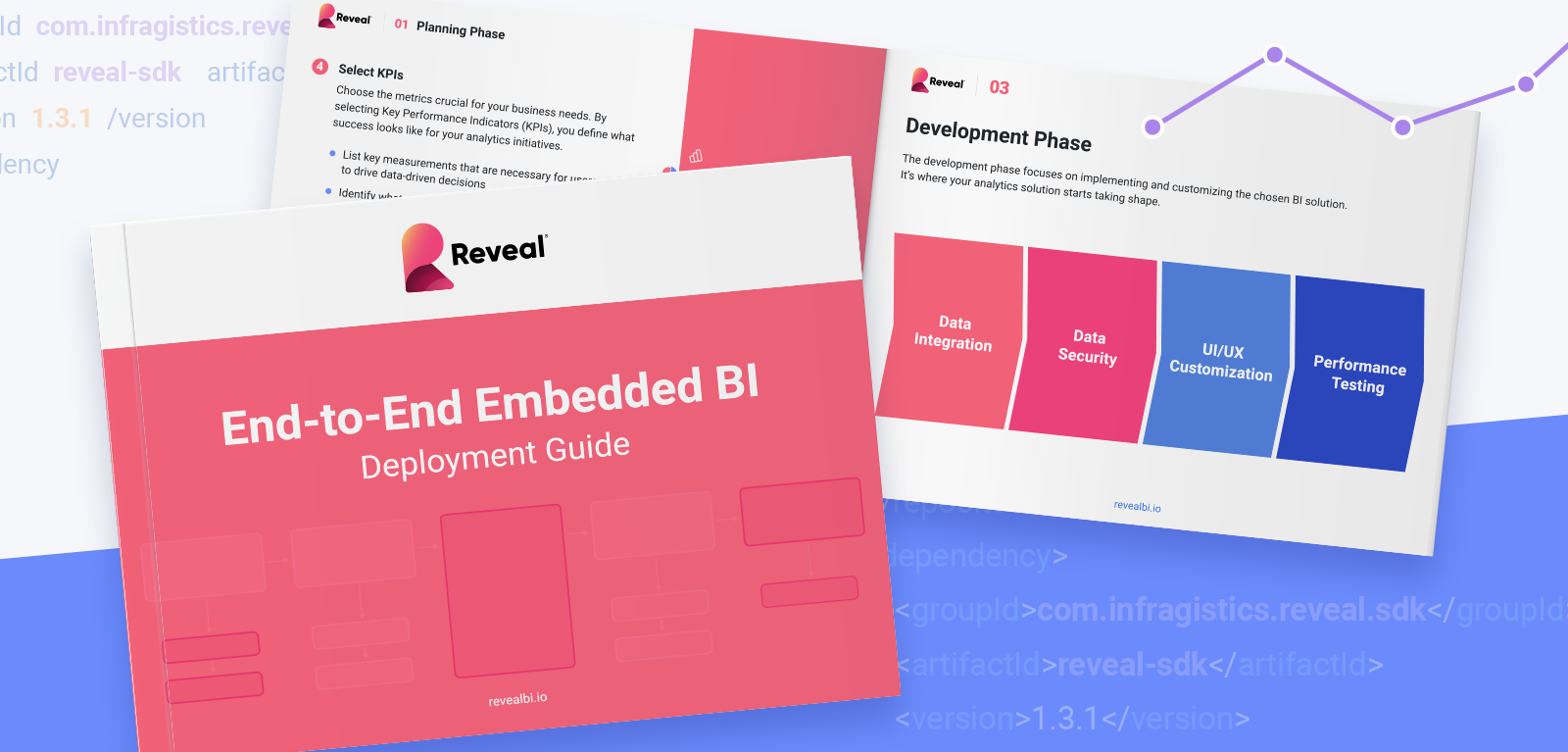
This whitepaper explores the journey of deploying an Embedded BI solution, outlining the strategic planning, selection, development, and continuous improvement phases necessary for successful implementation.
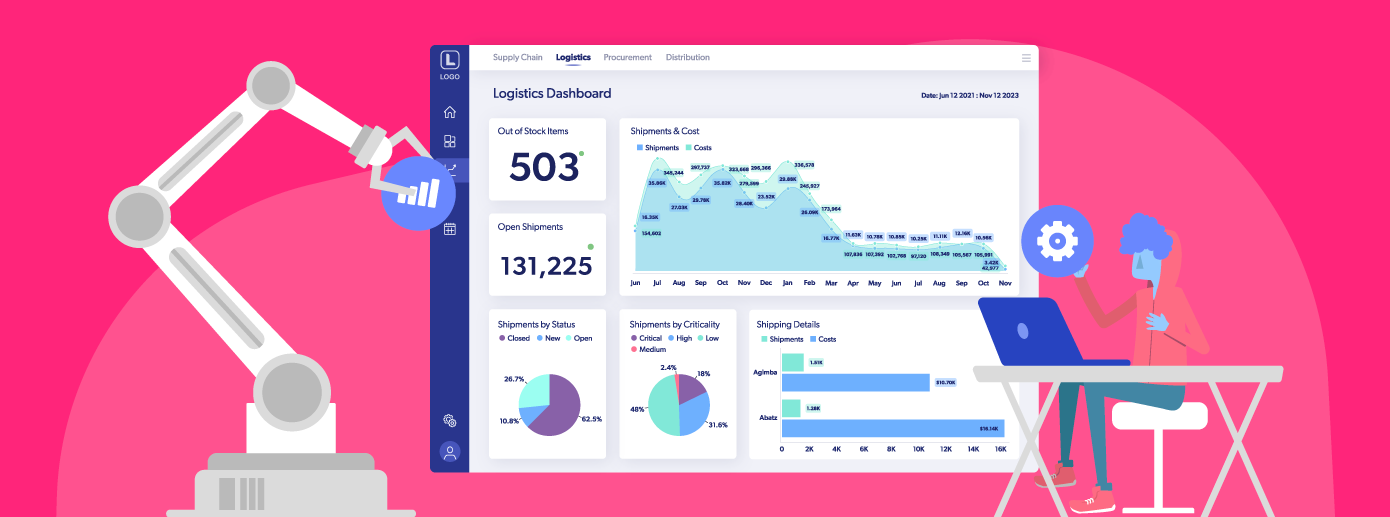
Ultimately, OEM analytics provides a unique competitive edge by offering a swift, tailored, and user-friendly approach to data-driven decision-making.
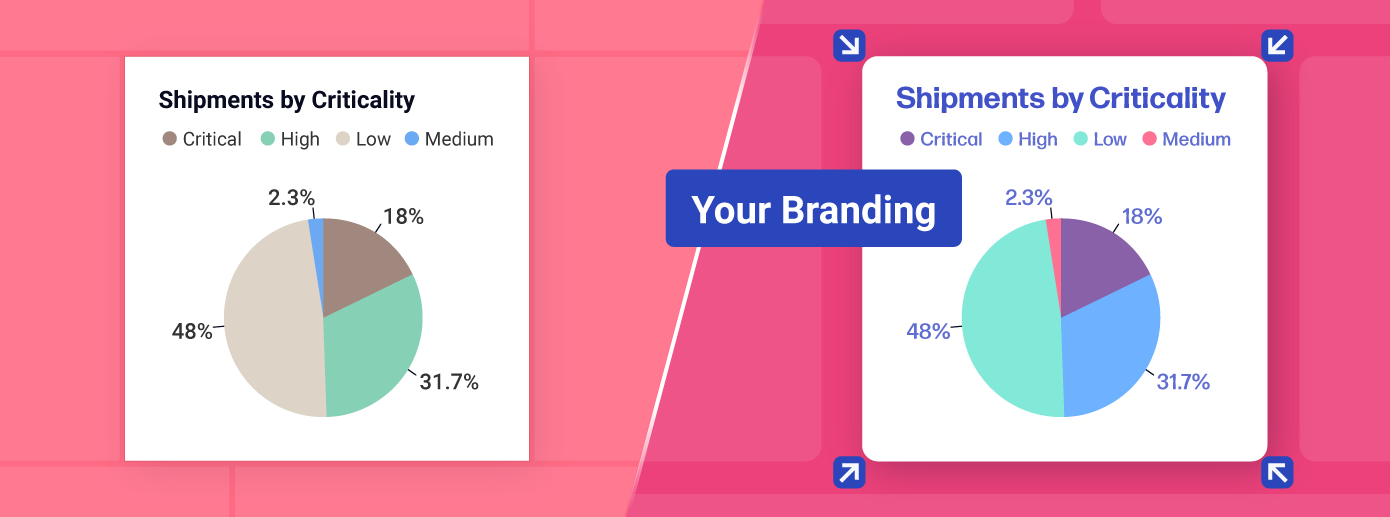
Fully branded white label dashboards offer custom personalization so that your customers can present a holistic service that is all branded to one company.